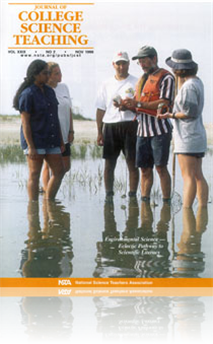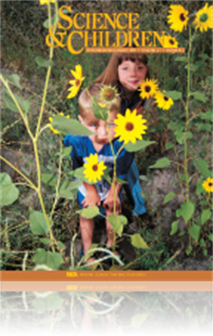All Resources
Journal Article
When teaching heredity and genetics, a problem-centered, open-ended approach allows students to feel like scientists solving real problems. This investigation of fruit flies (Drosophila melanogaster) gives students independence, responsibility, and o...
Journal Article
K–12 teachers, who sometimes know more about teaching and learning than college professors, can be a great source of information about effective teaching strategies. This paper presents a synopsis of typical K–12 experiences that college educator...
Journal Article
SCST: What Happened to Scott? Helping Our Students Through Online Courses and Distance Education
In this column the leadership of the Society for College Science Teachers (SCST) shares its views with JCST readers. In this month’s issue, the president shares thoughts about online courses and distance education....
Journal Article
Conceptual Change in the Classroom
When was the last time you tried a new teaching method? The conceptual change model of learning may be what you need. In this article, three teachers agreed to try the new teaching method and reported that modifying their established routine was easy...
Journal Article
Studying Our Skin: Students learn about skin using the learning-cycle structure
Investigative activities enabling students to explore the many purposes of our skin can create meaningful understanding of its functions. These activities can also help children construct an understanding of the skin as an always present but constant...
Journal Article
Video-Based Labs for Introductory Physics Courses: Analyzing and Graphing Motion on Video
Video-based labs are a powerful tool for improving student understanding of one of the most difficult and important topics in physics: graphs. This article describes common student graphing difficulties, the history of VBL, techniques for improving s...
Journal Article
Classroom experiments are often designed for convenience, ignoring fundamental scientific processes. Even “hands-on” experiences seldom allow the student to define the problem or design the experiment. The example outlined here incorporates the e...
Journal Article
Scope on the Skies: The sky is falling
This column focuses on astronomy throughout the year. In this issue, learn about the special events occurring in the months of November and December....
Journal Article
Making Environmentally Friendly Cleaners
The emphasis on science education involves students "doing science" with hands-on and minds-on activities. In this article, students do science by making, testing, and comparing the effectiveness, cost efficiency, and safety of environmentally friend...
Journal Article
Teaching Teachers: Day of Science
"Day of Science" provided students an opportunity to sample various hands-on activities and also provided superb learning and practice opportunities for visiting preservice teachers. This article offers information on how the project came about and h...
Journal Article
When John Dewey’s name appears somewhere, many people imagine a librarian inventing an organizing system for shelving library books, but this is a different Dewey. Here the author is talking about John Dewey (1859–1952), the educator whose ideas ...





